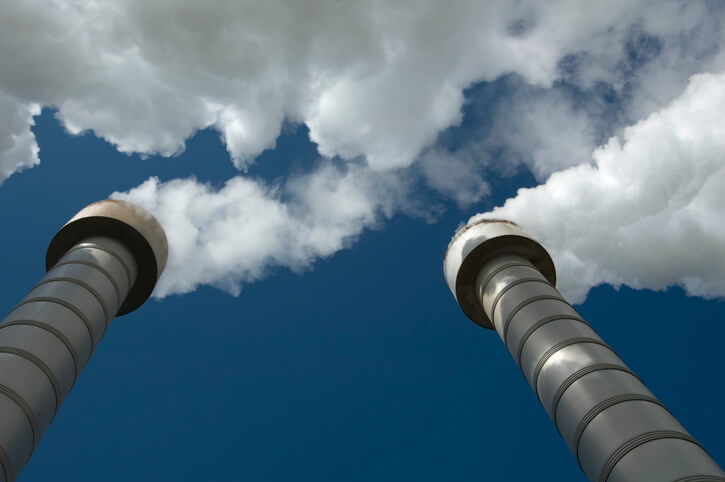Reducing methane emissions is essential in the fight against climate change. Methane is a potent greenhouse gas, over 25 times more effective than carbon dioxide at trapping heat in the atmosphere. Methane emissions stem from various sources, including agriculture, energy production, and waste management.
Focusing on emission control and innovative technologies can significantly reduce methane levels, thereby lowering global warming potential and promoting sustainable practices. Solutions like advanced gas capture, improved waste management, and regulatory compliance can help industries minimize methane output while enhancing operational efficiency.
In this article, we explore five ways to reduce methane emission using GasPro Compression technologies, including enhanced recovery and emission control methods to support sustainability goals.
GasPro Compression solutions offer tailored ways to capture, recycle, and control methane, enabling companies to reduce emissions while enhancing operational efficiency.
Optimizing Oil Wells with Casing Gas Compressors
Casing gas compressors play a crucial role in reducing methane emissions by preventing gas loss from wellheads:
- Purpose: These compressors capture excess pressure at the wellhead, releasing the trapped gas and allowing it to flow efficiently.
- Environmental Benefits: Casing gas compressors significantly reduce methane emissions by minimizing the venting of methane, addressing a critical point of leakage in oil well operations.
- Economic Advantages: Efficient gas conservation translates into cost savings, as operators can retain more gas within the production system.
Key features of casing gas compressors:
- High durability in extreme conditions
- Adjustable settings for variable pressure requirements
- Low-maintenance design for continuous operation
Hydraulic Compressors for Low-Flow Rate Gas Capture
Another effective way to address methane emissions in low-flow systems is through hydraulic compressors, which provide:
- Precision Capture: Ideal for capturing methane at extremely low flow rates, hydraulic compressors eliminate the need for venting or flaring.
- Regulatory Compliance: GasPro’s hydraulic compressors meet stringent emission control standards, helping companies avoid penalties.
- Space Efficiency: Designed for compact applications, these compressors are ideal for tight spaces while offering consistent methane capture.
Advantages of hydraulic compressors:
- Reduced Environmental Impact: They effectively capture methane in low-volume areas, thus minimizing greenhouse gases.
- Economic Efficiency: Less gas loss translates to higher profitability, enhancing resource utilization.

Temperature Management and Emission Reduction with Condenser Boxes
In gas environments with high liquid content, condenser boxes are among the most effective ways to reduce methane emissions. These devices control temperature to condense liquids, ensuring they don’t reach the compressor, which maintains efficient gas processing.
Key benefits of condenser boxes
- Emissions Control: They prevent liquids from contaminating gas, which helps stabilize methane capture and minimizes the risk of accidental emissions.
- Extended Equipment Life: By keeping gas streams cleaner, condenser boxes reduce wear on compressors and related machinery, promoting longer operational life and efficiency.
Condenser boxes are crucial in comprehensive methane reduction strategies, combining emissions control with cost-effective equipment maintenance.
Enhancing Long-Distance Gas Transportation with Booster Compressors
Transportation of methane over long distances often leads to leaks and inefficiencies. GasPro’s booster compressors are optimized to ensure:
- High-Pressure Compression: Compressors apply high pressure to transport methane across miles, reducing leaks that could otherwise occur in lower-pressure pipelines.
- Efficient Flow: This method ensures methane remains within the pipeline system, enabling safer, greener gas transportation.
- Reliability: Designed to handle high-stress environments, these compressors work continuously to keep the gas flow steady across long distances.
Benefits of booster compressors:
- Reduced Methane Leakage: High-pressure transport reduces escape points, which is critical for reducing methane emissions in gas transmission.
- Cost Savings: Minimizing leakage translates to operational cost savings by retaining methane within the system.
GasPro Vapor Recovery Units (VRUs) for Enhanced Emission Control
GasPro’s Vapor Recovery Units (VRUs) provide efficient ways to reduce methane emissions by capturing tank vapours and returning them to the system, preventing atmospheric release.
- Application: VRUs capture vapours from storage tanks, compressing them back into circulation rather than venting them.
- Environmental Impact: This capture method conserves methane, reducing emissions and resource waste.
- Financial Benefits: By converting vapour into usable gas, VRUs increase system profitability.
VRU core components:
- Pressure control for low-pressure vapors
- Compact, adaptable design
- High-efficiency operation with minimal energy usage
Mitigating Harmful Emissions from BTEX Compounds
BTEX compounds, a group of volatile organic chemicals, are commonly found in gas dehydration processes. GasPro’s solutions offer control mechanisms to:
- Reduce BTEX Emissions: The GasPro condenser box or the VRU system can capture and neutralize benzene, toluene, ethylbenzene, and xylene emissions.
- Health and Environmental Protection: By controlling these compounds, GasPro protects both operators and the environment, addressing carcinogenic and greenhouse gas risks.
BTEX vapour recovery:
- Condenser and Tank Assembly: A condenser box combined with a tank assembly reduces emissions to safe levels for moderate emission control.
- Complete Elimination System: Using the BTEX VRU, harmful BTEX gases can be eliminated from emissions.
Act Now to Reduce Methane Emission with GasPro Compression Solutions
Reducing methane emissions is essential for protecting the environment, achieving regulatory compliance, and enhancing operational efficiency. By incorporating GasPro’s advanced technologies, companies can access effective ways to reduce methane emissions across various applications, from oil well optimization to vapour recovery.
Getting Started with GasPro
With the current grant funding available, now is the perfect time to begin your methane reduction journey. GasPro’s team is ready to support you in developing a sustainable, compliant, and economically beneficial plan for reducing emissions.
Benefits of Partnering with GasPro
Choosing GasPro ensures access to reliable, state-of-the-art emission control technology:
- Expert Guidance: GasPro offers expert advice tailored to your company’s needs from initial consultation to implementation.
- Customized Solutions: Compression systems are tailored to the unique requirements of each industrial setup, maximizing efficiency and emission reduction.
- Ongoing Support: Post-installation support guarantees continued compliance and efficiency as your operations evolve.
Reach Out to GasPro Today
Taking action to reduce methane emissions is more urgent than ever, and with the right partner, it’s within reach. Contact GasPro to learn more about how our compression systems can fit into your operations and help make a meaningful environmental impact. Our contact phone number is 403-443-8886.

